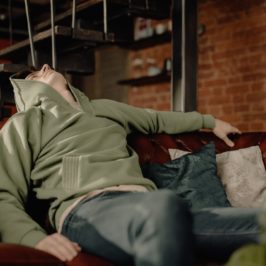
By: Brian Warner
In the 1980s, fear and panic swept across the U.S. as more and more news reports came out about satanic rituals being performed in seemingly safe neighborhoods. In what became known as the “Satanic Panic,” horrifying, unthinkable stories of kidnapping, abuse, and human sacrifice were suddenly everywhere – maybe even in your own child’s daycare.
More than anything, the Satanic Panic spurred parents to come to the defense of their children in the face of an unfamiliar evil that had already made its way inside their own community. Young children admitted to seeing – or even being forced to participate in – daycare workers’ dark rituals when their parents went off to the office.
In the aftermath, California’s McMartin preschool trial became the longest and most expensive series of criminal trials in U.S. history up until that point. Dan and Fran Keller, who cared for about fifteen children from their Texas home, both spent nearly 22 years in prison on sexual assault charges. Frank Fuster, who owned a babysitting service with his wife in Florida, is still in prison to this day.
The only problem? 40 years later, no one has found any evidence to back up a single claim.
So why is it that, to this day, some people still insist that this really did happen?
Our minds are constantly receiving new information – even when we don’t realize it – and processing it into a new memory engages certain neurons in a particular sequence. The connection between these neurons will be stronger for something we remember often, like a childhood phone number, and weaker for something we remember less often. To strengthen them further, the hippocampus, where most memories are stored, works with the amygdala, which regulates emotion, to give context and meaning to our memories.
But while that may make memory sound set in place like a paved interstate, it can often be more like a trail of breadcrumbs.
Elizabeth Loftus, Ph.D., refers to this as the “flimsy curtain that separates our imagination and our memory.”
Loftus is not only considered one of the most influential psychologists of the 20th century, but an expert on how memory works – and, even more importantly, how it so often doesn’t work. In her 1978 study on how memory can be influenced after the fact, Loftus would show participants a photo (like a car accident at a stop sign) and ask a misleading question (like, “Did another car pass at the yield sign?”). Later, when she’d ask participants if the photo had been taken at a stop sign or yield sign, they were much more likely to remember wrong.
This means that memory can change over time as a person learns more or is exposed to totally unrelated information. Using MRI scans, researchers from Northwestern University found that the areas of the brain that remember and the area of the brain that imagines are separate, but have a large amount of overlap.
Put simply, this means that memory works like a game of telephone. That sequence of neurons that formed the original memory might attach itself to another piece of information, and replace the original version with something a little off.
We can see this in the phenomenon colloquially named “The Mandela Effect,” after the memories many had from news coverage of South African anti-Apartheid leader Nelson Mandela’s death in prison in the 1980s – despite, in reality, Mandela surviving his imprisonment, later serving as President of South Africa, and dying in 2013. Or, if you’re younger, the revelation that there never was a children’s book series called The Berenstein Bears – but there was one called The Berenstain Bears.
Recovered memory therapy, though, relies almost entirely on the brain working in this way – and was the go-to method for investigators working with the children of the Satanic Panic. In the 1980s and ‘90s, therapists proudly advertised their ability to help clients unearth previously repressed memories of sexual abuse, giving a neat, easy explanation to any current mental anguish. They would guide patients through now-controversial (or even downright discredited) methods of therapy like hypnosis and “deliberate prompting of mental images” to help them recall “previously forgotten” traumatic memories – techniques we now know are much more likely to distort memory than unlock it.
These “memories” revolved around stories of the occult so often that, by 1994, more than one in ten clinicians reported seeing at least one case of recovered memories of ritualistic abuse.
Richard McNally, Ph.D., a psychology professor from Harvard University, went so far as to call the recovered memory movement “the worst catastrophe to befall the mental health field since the lobotomy era.”
But Elizabeth Loftus is quick to point out how compelling stories like these still are to juries:
You have a real victim, you don’t want to disbelieve that the crime happened, you don’t want to look as if you are undermining this person’s experience . . . Expert testimony [that a researcher like Loftus provides] can give them accurate information that they can use to decide whether this identification is likely to be an accurate one or possibly a mistaken one.
James Doyle, a former head of Massachusetts’s Public Defender Division, said that Loftus’ research “obliterated the idea that there is a permanent, stable memory capacity in humans . . . Her work changed the whole story of what an eyewitness case was about, and destabilized a solid and routine part of the criminal caseload.”
And in doing this, Loftus became a go-to expert witness in high profile criminal cases, including the McMartin preschool trial where officers counted nearly 400 children reporting to have been abused – on top of bizarre claims like seeing their teacher fly across the room, being flushed down toilets to secret underground torture-tunnels, and that one of their abusers was none other than Chuck Norris.
If these sound hard to believe, you’re a few steps ahead of the Manhattan Beach Police Department.
But for as ridiculous as stories like these sound and as sure as we feel saying “I’d never fall for that,” it’s important to remember that memories like these, real or imagined, did irreparably affect many lives.
Carol Felstead, for instance, was a young British nurse in the mid-1980s. She was described as “feisty” and being “a good laugh,” loved watching M*A*S*H, and often volunteered to care for people in her community. But in her early 20s, she began drifting further and further away from her family.
It wasn’t until she died that they discovered Carol had been working with therapists who bolstered her belief that she was also a survivor of Satanic ritual abuse. They learned of recovered memories she claimed to have, like a sister killed as a human sacrifice (her sister had actually died of heart failure two years before Carol’s birth) and six forced pregnancies throughout her teen years (there is no evidence that she was ever pregnant).
Because of these “memories,” she spent half her life largely estranged from her family, and it took two weeks before they even learned of her death.
In the closing pages of the Satanic Panic’s seminal work, the now-discredited memoir Michelle Remembers, co-authors Michelle Smith and her therapist-turned-husband Lawrence Pazder write, “Michelle hopes the book will alert people to the horror of hurting children. The possibility that another child is now being prepared for the next Feast for the Beast . . . is very much on her mind.”
The scary truth is, at the time of its publication, very real children were being hurt. It would be more than twenty years before the world reckoned with the fact that spiritual abuse and sexual abuse were often going hand-in-hand – not from the Church of Satan, though, but from the Catholic Church.
It raises an important question when considering the Satanic Panic: what is considered “enough proof” in the search for answers? And what answers do and do not give us the space to heal?
Were people really more comfortable believing in massive Satanic cults spreading across American daycares than acknowledge their discomfort in fewer women staying home with the kids? Or that, for some people, the little stresses of day-to-day life can be enough to make people unhappy, and that it doesn’t need to be a sign of horrific, hidden-away memories of abuse?
Uncovering the answers to these questions can feel scary – maybe even scarier than theories we can come up with about Satanic cults – but they also give us more insight into ourselves, the struggles we’re facing, and what life would look like without them.
DISCLAIMER
The information, including but not limited to, text, graphics, images and other material contained on this website are for informational purposes only. No material on this site is intended to be a substitute for professional medical advice, diagnosis, or treatment. Always seek the advice of your physician or other qualified healthcare provider with any questions you may have regarding a medical condition or treatment and before undertaking a new health care regimen, and never disregard professional medical advice or delay in seeking it because of something you have read on this website.






